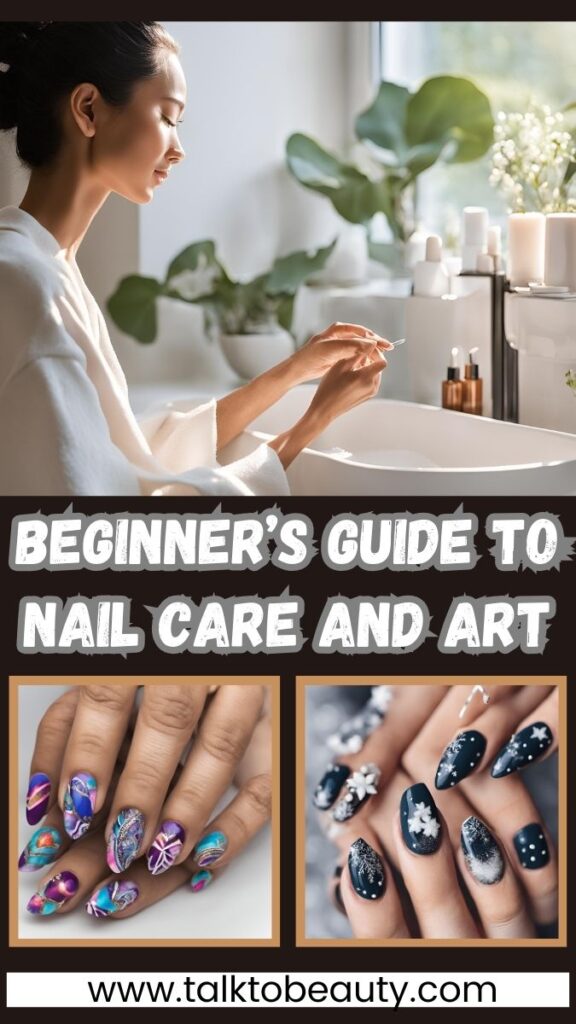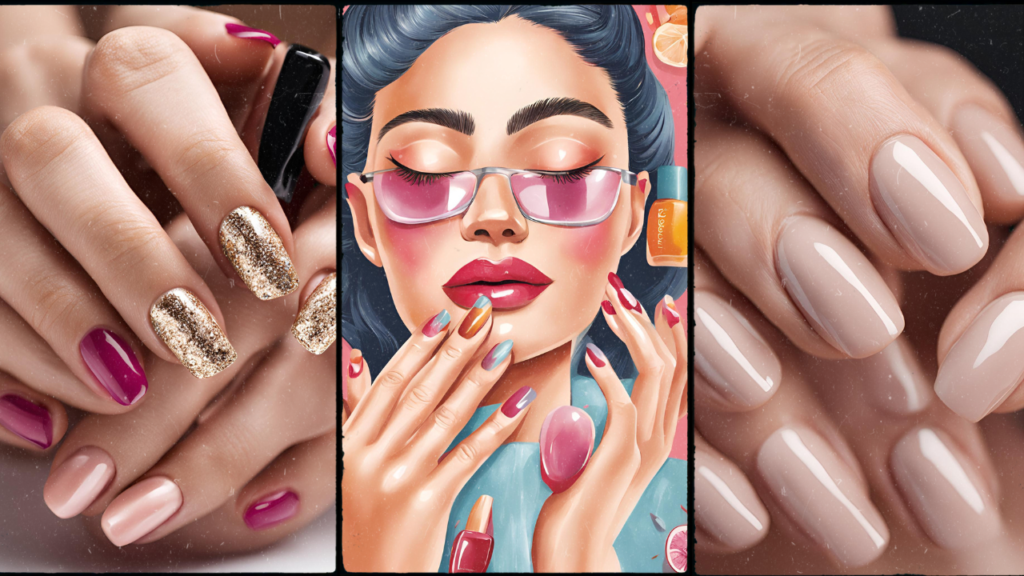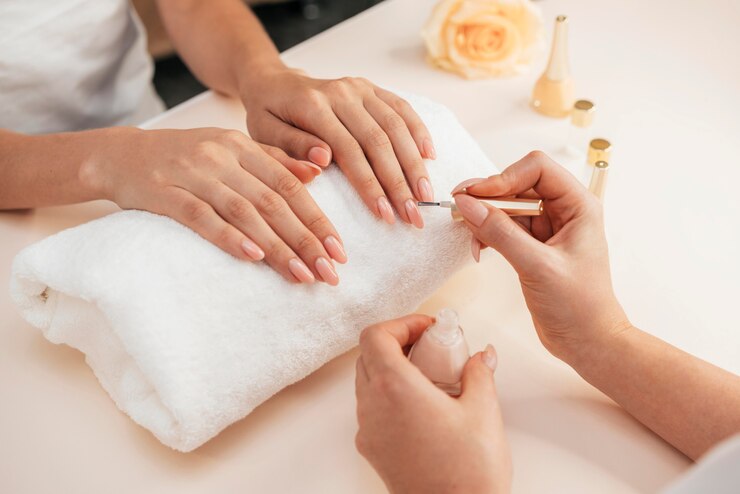Ever looked at your nails and thought they deserve a little extra love? You’re not alone.You’re scrolling through Instagram, admiring flawless nail art that seems too perfect to be real. Your own nails? A chipped mess. You sigh, thinking,

“Where do I even start?”
Can something as small as nail care really boost your confidence and overall appearance? Spoiler alert: it absolutely can.
Did you know that healthy nails are not only a beauty statement but also a sign of good hygiene and overall wellness?
Nail care often feels overwhelming for beginners especially when you don’t have all those fancy tools you see on YouTube tutorials.
But here’s the good news: you don’t need to break the bank or follow a complicated routine.
With the right tips, anyone even total beginners can keep their nails healthy and beautiful.
Table of Contents
Why Nail Care Matters
Nail care isn’t just about the looks it’s about health. Weak, brittle nails can cause pain, and infections can lead to lasting damage. You want nails that are not only beautiful but strong, too.
Importance of Nail Health: Proper nail care helps to prevent breakage, discoloration, and painful hangnails.
Healthy nails are the foundation for every nail art design you’ll ever try. They act as your blank canvas.
Benefits of Well-Maintained Nails:
- A polished look that boosts your confidence.
- Fewer issues like infections or splits.
- Healthy nails are easier to maintain, meaning less stress and more creativity for art.
Myths About Nail Care
Myth #1: “Your nails need to breathe.”
This is a common misconception. Nails are made of keratin and don’t require oxygen to stay healthy.
Myth #2: “You should never cut your cuticles.”
While it’s important to be gentle, trimming them can sometimes be necessary to prevent hangnails and infections. Just don’t overdo it.
Beginner Nail Guide: Nail Care Basics
Understanding Your Nails:
Nails are made up of three main parts:
- Nail Bed: The pinkish part of the nail underneath your nail plate.
- Cuticle: The thin layer of skin at the base of your nail.
- Free Edge: The part of the nail that extends beyond your fingertip.
Common Nail Problems:
- Ridges: Often caused by dehydration or nutritional deficiencies.
- Peeling Nails: Usually caused by excessive exposure to water or harsh chemicals.
Nail Care for Beginners
Essential Tools for Nail Care: You don’t need an entire salon kit to get started. Here’s what you really need:
- Clippers
- Nail Files
- Cuticle Pushers
- Buffers
- Moisturizer
Building a Routine:
- Clean: Start by washing your hands and nails.
- Trim: Use clippers to cut your nails to your desired length.
- File: Smooth the edges with a nail file.
- Moisturize: Apply cuticle oil or hand cream to hydrate your nails.
Cuticle Care:
Gently push back your cuticles after a warm soak. Avoid cutting them unless absolutely necessary.
How to Strengthen Your Nails
If you’ve ever dealt with brittle or weak nails, this part is for you. Strengthening your nails is key to keeping them healthy and prepared for nail art.
Nail Oils:
Hydrate your nails with oils like jojoba or coconut oil. Massage it gently into the cuticle area to keep your nails soft and flexible.
Avoid Biting Nails:
It’s tempting, but avoid using your nails as tools to open packages or bite them. This weakens your nails over time.
Biotin and Hydration:
Taking biotin supplements and staying hydrated can help your nails grow stronger and more resilient.
Nail Art Basics for Absolute Beginners
How to Apply Nail Polish on Short Nails:
Short nails can look stunning with the right nail art. Start simple with a clean, bold color. You don’t need to go overboard—sometimes simplicity is best.
Tools You Need for Nail Art:
- Nail polish
- Dotting tools
- Brushes
- Tape
- Household items like toothpicks also work wonders!
Preparing Your Nails for Art:
Always start with a base coat. It protects your nails and helps the polish stick longer. Then, apply your chosen polish color and finish with a top coat to seal everything in.
Easy Nail Art Techniques for Beginners
- Polka Dots:
Use a toothpick or pin to make easy dots. You can make them small or large, depending on your style. - Stripes:
You can create stripes using tape or freehand. Practice a steady hand, and you’ll be surprised at how easy it is. - Ombre Design:
Use a sponge to create a beautiful ombre effect. Start with your lightest color and work your way to the darkest. - Accent Nails:
Pick one nail on each hand and create a fun design. This adds flair without overwhelming your nails.
Fixing Mistakes:
If you smudge your design, don’t panic! Use a Q-tip dipped in nail polish remover to clean up any mistakes.
Nail Care Tips to Keep Your Art Fresh
How Much Nail Polish Should Be on the Brush?
Less is more. A thin layer prevents smudging and helps your nails dry faster.
Longevity Tips:
- Use a quality top coat to seal in your designs.
- Wear gloves while cleaning or gardening to avoid chipping.
- Quick touch-ups: Keep a bottle of clear polish handy to freshen up any chips.
Beginner Nail Care and Art FAQs
How often should I cut or trim my nails?
You should trim them every 1-2 weeks or whenever they start to snag.
What’s the easiest design for total beginners?
Start with polka dots or a single accent nail. These are easy to do and look great on any nail length.
How can I stop my nails from breaking or peeling?
Moisturize your nails daily, avoid harsh chemicals, and strengthen them with oils like jojoba or coconut oil.
Do I need fancy tools for nail art?
No! You can achieve beautiful designs with basic tools like toothpicks, tape, and even bobby pins.
Is it bad to push back my cuticles?
Not if you do it gently after a warm soak. Just make sure not to rip or cut them.
Conclusion
Whether you’re looking to pamper yourself with a fresh manicure or explore the creative world of nail art, it all begins with solid nail care.
By following the right steps, anyone even total beginners can enjoy healthy nails and creative designs that make them feel confident and polished.
So, grab those clippers, get your polish ready, and start your nail care journey today!
FAQ
How often should I trim my nails?
Trim your nails every 1-2 weeks or whenever they start to snag or grow too long.
What’s the easiest nail art design for beginners?
Start with simple designs like polka dots or a single accent nail—both are easy and stylish.
How can I prevent my nails from breaking or peeling?
Moisturize your nails daily, avoid harsh chemicals, and use strengthening oils like jojoba or coconut oil.
Do I need special tools for nail art?
No! You can create beautiful nail art using basic items like toothpicks, tape, and even bobby pins.
Is it okay to push back my cuticles?
Yes, as long as you do it gently after a warm soak. Avoid cutting or ripping them to prevent injury.


